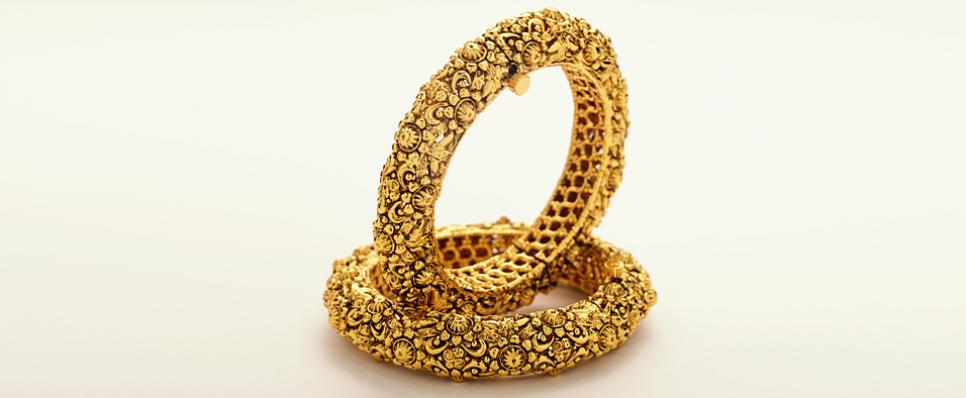Published: 20 Feb 2018
Journey of Indian gold jewellery through eras

It is difficult to find an Indian woman who doesn’t love gold jewellery. Our fascination for jewellery began 5,000 years ago during Indus Valley civilization. The history of gold jewellery in India recites the history of the country itself. Indian jewellery is the striking expression of the cultural history and its aesthetics. Backed with literature, myths, chronicles, legends, and texts, these pieces of evidence of tradition are unparalleled in the world.
Let’s dive deeper and have a look at the journey of Indian jewellery through different eras:
Indus valley civilization (2600 and 1900 BCE)
People in Indus Valley civilization had well developed aesthetic sense, intricate engineering skills and sophistication. More than the technological prowess, what one marvels at is the continuity of design in different parts of the country. Rajasthani Borla finds its influence from sheet gold forehead ornament from Indus valley. You see this ornament on the forehead of Didarganj Yakshi, one of the popular ancient sculptures.
Sangam Era (4th century BC to 2nd century AD)
After the fall of Mohenjodaro, the Indian jewellery became more delicate and intricate. Silappadikaram, one of The Five Great Epics of Tamil literature of Sangam era, talks about a society that dealt with gold, precious stones and pearls, a Portuguese traveller, the chronicles of Paes, and illustrates stunning jewellery pieces worn by people in Vijayanagar empire. These intricate, chunky pieces of jewellery, embedded with rubies and emeralds, were initially crafted only to adorn the idols in the temples. However, over a period when Bharatnatyam spread widely, this temple jewellery became accessible to dancers and later among the commoners as heirloom and trousseau.
Mughal Era (1526- 1857)
Mughal patronage further embellished the traditional Indian jewellery and brought innovative creation techniques. Central Asian styles fusion with Indian techniques resulted in the lush extravagance of elegant and exquisite ornamentation that the world never saw before. The ancient town of Taxila found the enamelling of jewellery, a technique that reached its apex under the Mughals. These ancient Indian designs then were modified to integrate nature inspired, floral, and geometrical designs. Indian artisans perfected the Mughal Kundan and Jadau techniques and added their inimitable touches to make a unique design of their own.
British Era (1858 – 1947)
Country’s colonial rulers started influencing Indian jewellery designs during the nineteenth and early twentieth century. Cartier, the distinguished European jeweller started creating jewellery pieces for Maharajas. Well, it worked the other way too. For instance, the Cartier’s popular “tutti frutti” style found its influences from South Indian floral motifs, embedded with rubies, emeralds and sapphires.
Though the journey of Indian jewellery has been long, it has undoubtedly added to the charm, multiplying the craze for the gold. In the contemporary world, though new designs based on modern style have come into view, the intricate and exquisite traditional designs that keep enchanting everyone are unparalleled.











